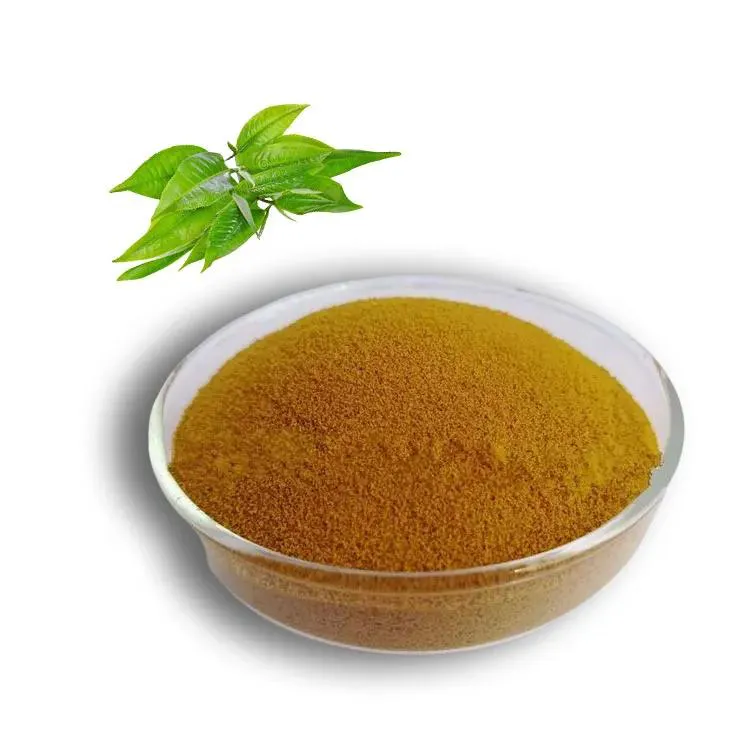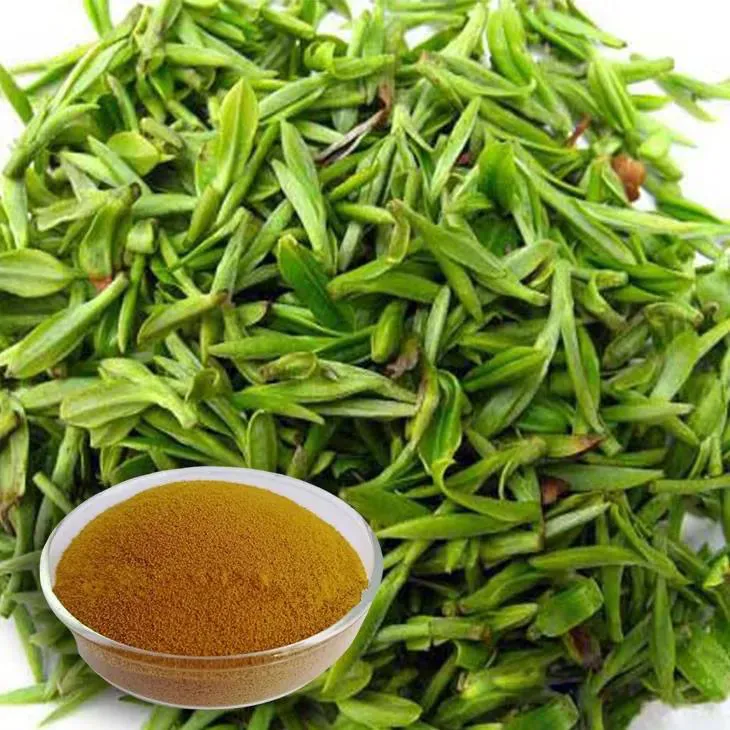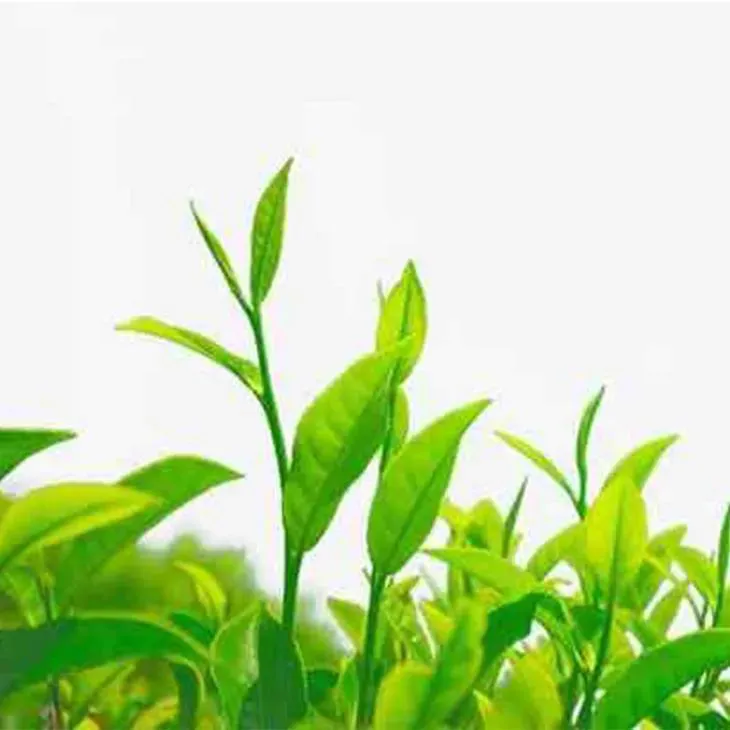- 0086-571-85302990
- sales@greenskybio.com
The Best Method for Extracting Green Tea Extract.
2024-11-30

1. Introduction
Green tea has been consumed for centuries due to its numerous health benefits. The extraction of Green Tea Extract (GTE) has become an important area of research as it can be used in various industries such as food, pharmaceuticals, and cosmetics. The goal is to find the best extraction method that is not only cost - effective but also environmentally friendly and capable of preserving the bioactive components for maximum health benefits.

2. Bioactive Components in Green Tea
Green tea contains a variety of bioactive components, with polyphenols being the most important group. Polyphenols, such as catechins (including epigallocatechin - 3 - gallate or EGCG), flavonols, and phenolic acids, are responsible for many of the health - promoting effects of green tea. These compounds have antioxidant, anti - inflammatory, anti - cancer, and cardioprotective properties.
Another important component is caffeine, which provides a stimulant effect. Theanine, an amino acid unique to tea plants, also has relaxing and stress - relieving effects. Preserving these bioactive components during extraction is crucial for the quality and functionality of GTE.

3. Traditional Extraction Methods
3.1 Solvent Extraction
Solvent extraction is one of the most commonly used traditional methods. In this method, a solvent is used to dissolve the bioactive components from the green tea leaves. Common solvents include water, ethanol, and methanol.
-
Water extraction:
Water is a natural and safe solvent. It can effectively extract many of the water - soluble components in green tea, such as polyphenols and theanine. However, it has some limitations. For example, the extraction efficiency may not be as high as with other solvents for some components. Also, water - based extracts may be more prone to microbial growth during storage.
-
Ethanol extraction:
Ethanol is a popular solvent for GTE extraction. It can dissolve a wide range of bioactive components, including polyphenols and caffeine. Ethanol - based extracts often have better stability compared to water - based extracts. However, ethanol is flammable, which poses some safety risks during the extraction process. Additionally, the cost of ethanol can be a factor, especially for large - scale production.
-
Methanol extraction:
Methanol is also used as a solvent in some cases. It has good extraction capabilities for certain components. However, methanol is toxic, and any residual methanol in the extract can pose a serious health risk. Therefore, strict control and purification steps are required when using methanol for extraction, which increases the complexity and cost of the process.
3.2 Soxhlet Extraction
Soxhlet extraction is a more elaborate solvent - based extraction method. It involves continuous extraction of the sample with a solvent. The green tea leaves are placed in a Soxhlet apparatus, and the solvent is repeatedly circulated through the sample.
- Advantages:
- It can achieve relatively high extraction yields for many components. The continuous circulation of the solvent ensures that the components are thoroughly extracted from the leaves.
- It can be used with a variety of solvents, allowing for flexibility in choosing the most suitable solvent for different components.
- Disadvantages:
- The process is time - consuming, often taking several hours to complete. This can limit the productivity in large - scale production.
- It requires a significant amount of solvent, which can be costly and also has environmental implications due to solvent waste.

4. Modern Extraction Methods
4.1 Supercritical Fluid Extraction (SFE)
Supercritical fluid extraction is a relatively new and advanced method. In this method, a supercritical fluid, usually carbon dioxide (CO₂), is used as the extraction solvent.
- Advantages:
- CO₂ is non - toxic, non - flammable, and environmentally friendly. It leaves no harmful residues in the extract, which is very important for applications in the food and pharmaceutical industries.
- The extraction process can be precisely controlled by adjusting the pressure and temperature. This allows for selective extraction of specific components, which can result in a higher - quality extract with a more concentrated profile of desired bioactive components.
- It has a relatively fast extraction rate compared to some traditional methods, which can improve productivity in industrial - scale production.
- Disadvantages:
- The equipment for SFE is expensive, which requires a high initial investment. This can be a barrier for small - scale producers or research laboratories with limited budgets.
- The process also requires relatively high pressure and precise control of parameters, which demands skilled operators and more complex maintenance.
4.2 Microwave - Assisted Extraction (MAE)
Microwave - assisted extraction utilizes microwave energy to enhance the extraction process.
- Advantages:
- It significantly reduces the extraction time compared to traditional methods. The microwave energy can rapidly heat the solvent and the green tea sample, increasing the mass transfer rate of the bioactive components from the sample to the solvent.
- It can also improve the extraction yield, especially for some components that are difficult to extract using traditional methods. The microwave - induced heating can disrupt the cell walls of the tea leaves more effectively, facilitating the release of the components.
- Disadvantages:
- The microwave energy can cause local overheating, which may lead to the degradation of some heat - sensitive components. Therefore, careful control of the microwave power and extraction time is required.
- The equipment for MAE also has some cost implications, although it is generally less expensive than SFE equipment.
4.3 Ultrasound - Assisted Extraction (UAE)
Ultrasound - assisted extraction uses ultrasonic waves to improve the extraction efficiency.
- Advantages:
- It is a relatively simple and cost - effective method. The ultrasonic waves can create cavitation bubbles in the solvent, which can enhance the mass transfer of the bioactive components from the tea leaves to the solvent. This can lead to higher extraction yields in a shorter time compared to traditional methods.
- It can also be used in combination with other extraction methods, such as solvent extraction, to further improve the extraction efficiency.
- Disadvantages:
- The effectiveness of UAE may be limited for some components, especially those that are deeply embedded within the tea leaf structure. The ultrasonic waves may not be able to completely disrupt the complex cell - wall matrices for all components.
- There can be some variability in the extraction results depending on the ultrasound frequency, power, and extraction time used.
5. Cost - Effectiveness Analysis
Cost - effectiveness is a crucial factor in determining the best extraction method. When considering the cost, we need to take into account several aspects:
The cost of green tea leaves is an important factor. Different grades of tea leaves may have different costs, and the extraction method may also affect the amount of tea leaves required. For example, some methods may require more tea leaves to achieve the same yield of GTE. The cost of solvents varies widely. Water is the cheapest solvent, but as mentioned earlier, it may not be the most effective for all components. Ethanol and methanol have costs associated with their production and procurement. In the case of supercritical fluid extraction using CO₂, although CO₂ is relatively inexpensive, the equipment required for its use under supercritical conditions is costly. The cost of equipment for different extraction methods varies significantly. Traditional methods such as solvent extraction and Soxhlet extraction generally require relatively simple and inexpensive equipment. However, modern methods like SFE, MAE, and UAE require more specialized and often more expensive equipment. The initial investment in equipment can be a major consideration, especially for small - scale producers. These include the cost of energy consumption during the extraction process, labor costs, and maintenance costs. For example, methods that require long extraction times or high - energy input, such as Soxhlet extraction and SFE (due to the need for high pressure), may have higher operating costs.
6. Environmental Impact
Environmental impact is another important aspect to consider.
Traditional solvent - based methods, especially those using large amounts of solvents like Soxhlet extraction, can generate a significant amount of solvent waste. This waste needs to be properly disposed of, which can be costly and has environmental implications. In contrast, supercritical fluid extraction using CO₂ has the advantage of being a more environmentally friendly option as CO₂ can be easily recycled. Methods that require high - energy input, such as microwave - assisted extraction and supercritical fluid extraction (due to the need for high pressure), may have a greater impact on the environment in terms of energy consumption. On the other hand, ultrasound - assisted extraction generally has relatively lower energy consumption.
7. Preservation of Bioactive Components
Preserving the bioactive components during extraction is essential for the quality and functionality of GTE.
Some components in green tea, such as certain polyphenols and theanine, are heat - sensitive. Methods that involve high - temperature processing, such as Soxhlet extraction, may cause the degradation of these components. In contrast, methods like supercritical fluid extraction and ultrasound - assisted extraction, which generally operate at lower temperatures, may be more favorable for preserving these heat - sensitive components. Some modern methods, such as supercritical fluid extraction, offer the advantage of selective extraction. This means that specific bioactive components can be targeted and extracted more efficiently, while minimizing the extraction of unwanted components. This can result in a GTE with a higher concentration of desired components and better preservation of their bioactive properties.
8. Conclusion
There is no one - size - fits - all answer to the best method for extracting Green Tea Extract. Each method has its own advantages and disadvantages in terms of cost - effectiveness, environmental impact, and preservation of bioactive components. For small - scale production or in cases where cost is a major constraint, traditional methods such as solvent extraction may be more suitable. However, for high - quality GTE production with a focus on environmental friendliness and preservation of bioactive components, modern methods like supercritical fluid extraction or ultrasound - assisted extraction may be more preferable. In conclusion, a comprehensive evaluation of all these factors is necessary to determine the most appropriate extraction method for a particular application.
FAQ:
What are the common methods for extracting Green Tea Extract?
Common methods for extracting green tea extract include solvent extraction, such as using ethanol or water as solvents. Supercritical fluid extraction is also used, often with carbon dioxide. Additionally, microwave - assisted extraction and ultrasonic - assisted extraction are emerging techniques that can enhance the extraction efficiency.
How does cost - effectiveness play a role in choosing the extraction method?
Cost - effectiveness is an important factor. Solvent extraction can be relatively inexpensive if common solvents are used, but there may be costs associated with solvent recovery. Supercritical fluid extraction equipment is expensive, but it can produce high - quality extracts with less solvent residue, which may offset the initial cost in some cases. Microwave - assisted and ultrasonic - assisted extractions may require specialized equipment, but they can potentially reduce extraction time and energy consumption, thus being cost - effective in the long run.
What are the environmental impacts of different extraction methods?
Solvent extraction may have environmental impacts if the solvents are not properly managed, as they can be toxic and may cause pollution. Supercritical fluid extraction using carbon dioxide is considered more environmentally friendly as carbon dioxide is non - toxic and can be easily recycled. Microwave - assisted and ultrasonic - assisted extractions generally have lower environmental impacts as they often use less energy and fewer chemicals compared to traditional solvent extraction.
How can the bioactive components be preserved during extraction?
To preserve bioactive components, extraction conditions need to be carefully controlled. For example, using mild extraction temperatures and short extraction times can help. Also, choosing the right solvent or extraction method is crucial. Supercritical fluid extraction can often preserve bioactive components well as it can operate at lower temperatures compared to some solvent extractions. Additionally, some emerging techniques like ultrasonic - assisted extraction can enhance the extraction of bioactive components while minimizing their degradation.
Which extraction method is most suitable for industrial - scale production?
For industrial - scale production, solvent extraction is often a popular choice due to its relatively simple setup and cost - effectiveness for large volumes. However, supercritical fluid extraction is also being increasingly used in the industry, especially for high - value green tea extracts, as it can produce high - quality products with better control over the extraction process. Microwave - assisted and ultrasonic - assisted extractions may also be suitable for industrial - scale production in combination with other methods to improve efficiency.
Related literature
- Green Tea Extract: Chemistry, Antioxidant Properties and Applications"
- "Advances in Green Tea Extract Production: A Review of Extraction Methods"
- "The Role of Extraction Techniques in Preserving the Bioactive Compounds of Green Tea"
- ▶ Hesperidin
- ▶ citrus bioflavonoids
- ▶ plant extract
- ▶ lycopene
- ▶ Diosmin
- ▶ Grape seed extract
- ▶ Sea buckthorn Juice Powder
- ▶ Beetroot powder
- ▶ Hops Extract
- ▶ Artichoke Extract
- ▶ Reishi mushroom extract
- ▶ Astaxanthin
- ▶ Green Tea Extract
- ▶ Curcumin Extract
- ▶ Horse Chestnut Extract
- ▶ Other Problems
- ▶ Boswellia Serrata Extract
- ▶ Resveratrol Extract
- ▶ Marigold Extract
- ▶ Grape Leaf Extract
- ▶ blog3
- ▶ blog4
-
Chinese Nettle Root Extract Powder Factory.
2024-11-30
-
Organic Yellow Pine Extract Powder Supplier
2024-11-30
-
Standard - process Hesperidin.
2024-11-30
-
Gynostemma pentaphyllum extract
2024-11-30
-
Citrus bioflavonoids
2024-11-30
-
Lemon Extract
2024-11-30
-
Chia Seed Powder
2024-11-30
-
Marigold Extract
2024-11-30
-
Hops Extract
2024-11-30
-
Tormentil Extract
2024-11-30
-
Aminolevulinic acid
2024-11-30
-
Shikone Extract
2024-11-30
-
Dan Shen Root Extract/Salvia Root Extract
2024-11-30





















